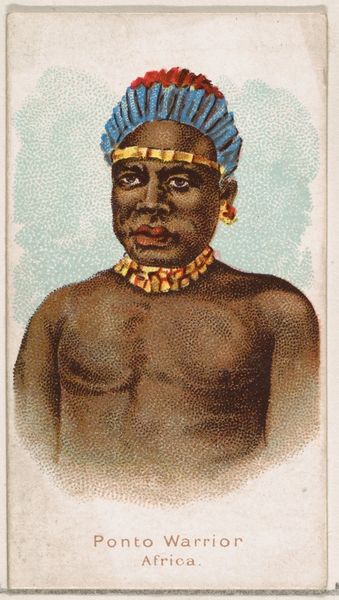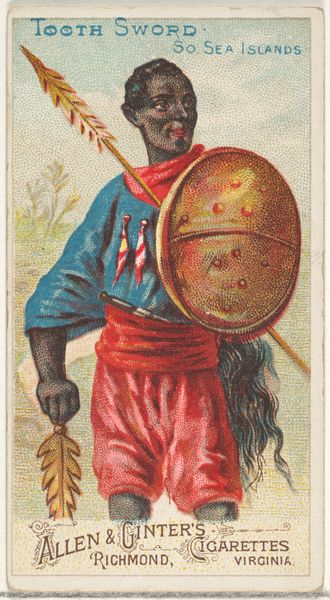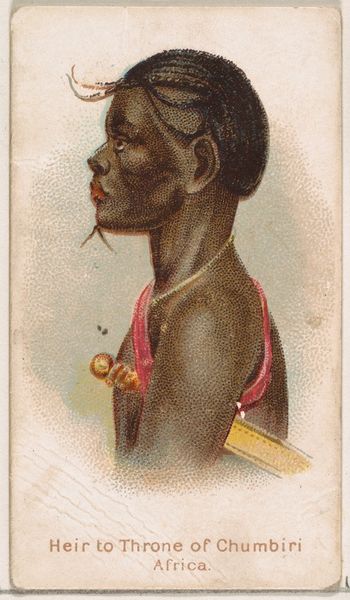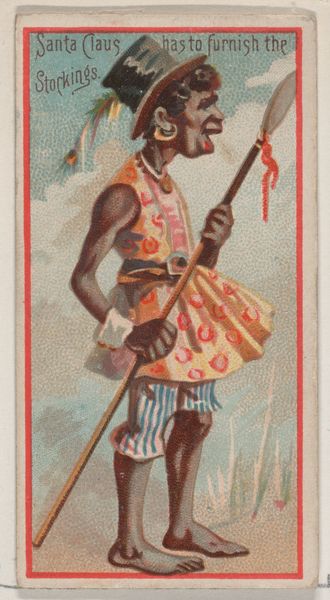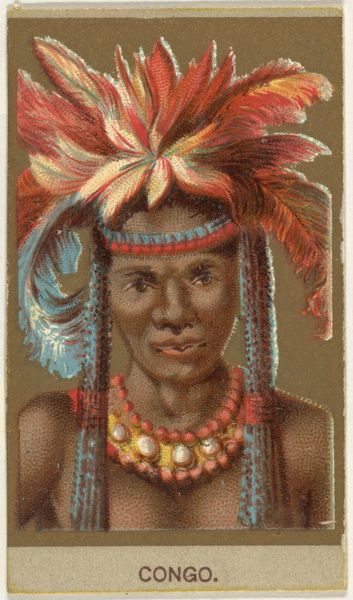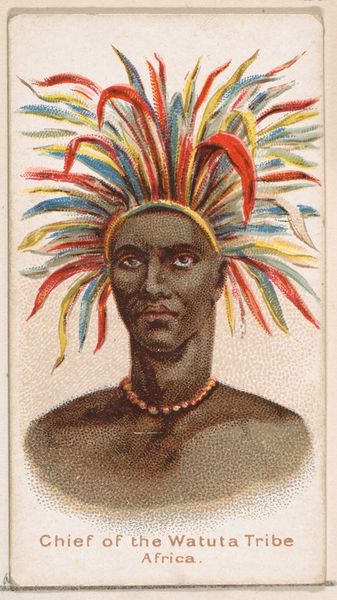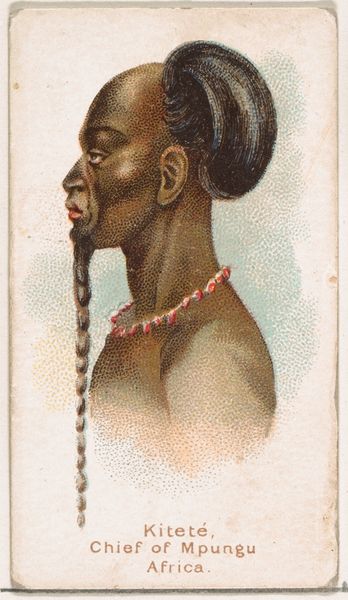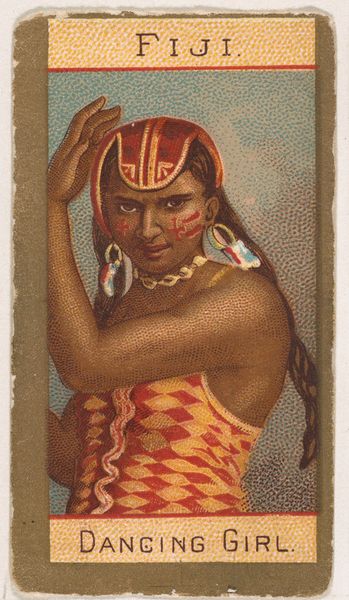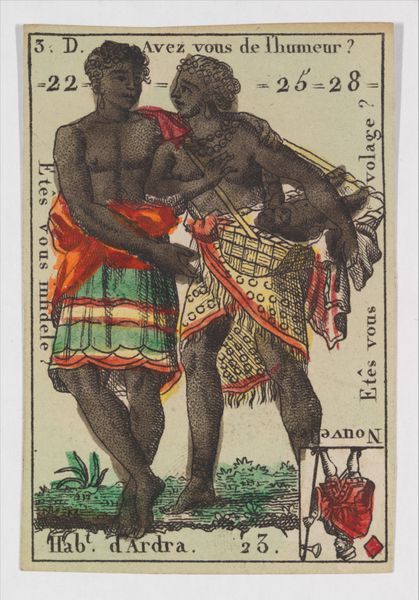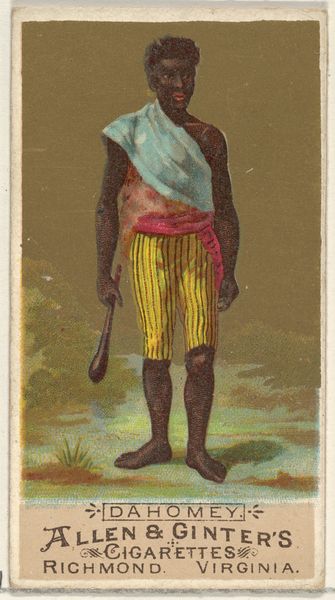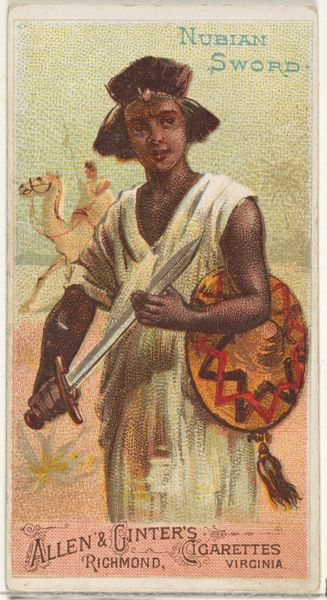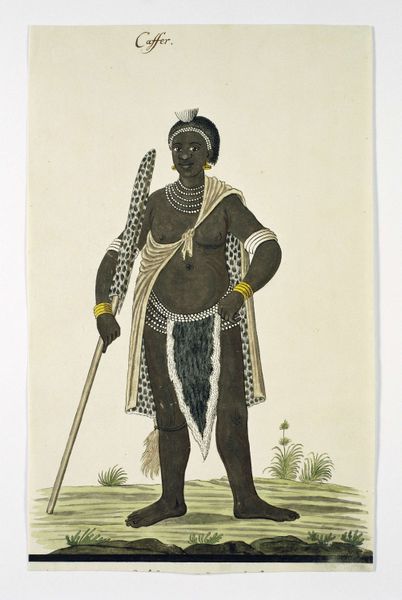
Assagai, from the Arms of All Nations series (N3) for Allen & Ginter Cigarettes Brands 1887
0:00
0:00
drawing, coloured-pencil, print
#
african-art
#
drawing
#
coloured-pencil
# print
#
figuration
#
coloured pencil
#
naive art
#
orientalism
#
art nouveau
Dimensions: Sheet: 2 3/4 x 1 1/2 in. (7 x 3.8 cm)
Copyright: Public Domain
Curator: This print is titled "Assagai," and it comes from the "Arms of All Nations" series created in 1887 by Allen & Ginter for their cigarette brands. It’s a color print, using color pencil and other drawing methods. What stands out to you initially? Editor: I notice how posed and strangely…passive this figure seems. There is a striking disconnect between the apparent intended subject – an African warrior – and the gentility in the execution of the scene. Curator: Exactly. Let's consider the visual elements first. Note the figure’s confident posture, his gaze steady and the spear raised, but the color palette employed subdues any sense of immediacy, don't you think? The texture work seems meticulously rendered to an almost dispassionate degree. Editor: Yes, there's a restraint bordering on romanticization here, symptomatic of a deeply entrenched Orientalist and colonial viewpoint. A "noble savage," perhaps? The 'Assagai' spear, shield, and dress are flattened, robbed of their real cultural meaning to instead promote a brand of cigarettes! Curator: You’ve pinpointed its complex position. The figure, isolated and centrally located, has inherent dynamism; however, its overall execution becomes subsumed within the purpose of commodification – a small card to encourage cigarette sales. How are we to process the contradiction? Editor: By interrogating it directly. Allen & Ginter appropriates cultural markers of power while participating in economic and racial exploitation abroad and in the USA. There is an assumed visual vocabulary concerning “exoticism” being played upon here that naturalizes hierarchy and power. It also suggests a lack of authentic representation of people of African descent, instead serving to reinforce and perpetuate biased imagery. Curator: You rightly point out the power dynamics inherent within the print's origin. Looking past such associations, this also reads to me as a careful visual orchestration, an artifact as interesting for its delicate construction as it is insidious for its historic framing. Editor: I agree. These tensions – aesthetics against the ugly realities of its making – are exactly what make such images so critically important in museums today. Thanks for helping reveal these complexities with me. Curator: My pleasure. There are always opportunities for careful seeing if you embrace the challenge of considering all levels.
Comments
No comments
Be the first to comment and join the conversation on the ultimate creative platform.
